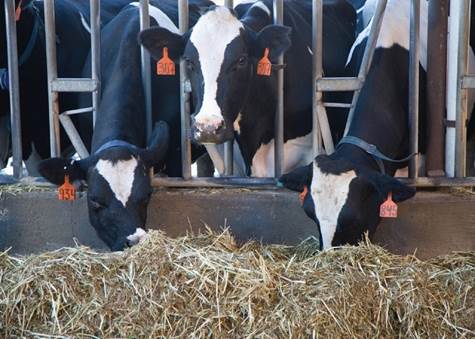 CDCB Connection October
2017
CDCB Connection October
2017
Introducing Genetic Evaluations for Six Health Traits
 The
dairy industry is poised to make foundational leaps in the ability to breed
healthier cows with the introduction of CDCB genomic evaluations for six direct
health traits. Dairy producers can incorporate these new health traits into
their Holstein breeding programs with official evaluations in April 2018.
The
dairy industry is poised to make foundational leaps in the ability to breed
healthier cows with the introduction of CDCB genomic evaluations for six direct
health traits. Dairy producers can incorporate these new health traits into
their Holstein breeding programs with official evaluations in April 2018.
Just as other genetic evaluations currently produced by CDCB, the health evaluations are based on sound research and national data. Foundational research has been published in several peer-reviewed journal articles, one of which is among the top 100 most highly cited papers published in the Journal of Dairy Science since 2014 (Parker Gaddis et al., 2014). Data editing and validation are based on peer-reviewed methods (e.g., Parker Gaddis et al., 2012). The new evaluations follow similarly-tested methods as those for traits currently included in CDCB genetic and genomic evaluations and developed by scientists at the Animal Genomics and Improvement Laboratory (AGIL; ARS, USDA). Furthermore, one of the traits will also undergo international validation through Interbull.
Dairy cattle that are more susceptible to common health events impact the profitability of dairy farms. The most recent estimates of direct treatment costs of the health events were obtained from literature. Steps were taken to ensure these estimates reflect the fact that the derivation of Net Merit already accounts for related losses such as decreases in production and fertility. CDCB has also accounted for the adjustments made to yield records that were indicated as having abnormal or sick test days. For the first time, this will provide producers with a realistic estimate of the savings provided by selecting animals more resistant to health events.
· Hypocalcemia: typically results after calving due to low total blood calcium levels, also commonly referred to as milk fever
· Displaced abomasum: enlargement of the abomasum with fluid and/or gas which causes movement to the left or right side of the abdominal cavity, usually requiring veterinary intervention
· Ketosis: build up of ketone bodies typically occurring due to negative energy balance in early lactation
· Mastitis: infectious disease causing inflammation of the mammary gland; one of the most common and costly disease of dairy cattle
· Metritis: infection of the endometrium (lining of uterus) after calving
· Retained placenta: retention of fetal membranes more than 24 hours after calving
The CDCB health evaluations will be presented as percentage points of event resistance above or below the breed average. Evaluations of cows born in the base year will average zero, similar to yield traits. Favorable values for resistance to the health event will receive positive values. For example, assume the resistance to clinical mastitis is 90%, which represents a 10% incidence rate. If Bull X has a PTA equal to +3.0 for mastitis resistance, daughters of Bull X would, on average, be more resistant to mastitis by 3.0 percentage points more than the population average. The resistance rate among Bull X's daughters should average 93% (90 + 3.0), given a significant number of daughter records. Alternatively, let's assume that Bull Y has a PTA equal to -4.0 for mastitis resistance. His daughters would be expected to have an average resistance to mastitis equal to 86% (90 - 4.0) as observations are accumulated.
Accurate health evaluations require the continued cooperation among many industry sectors. Producers provide the most critical component of the health evaluations by actively reporting health events on-farm, and this is essential to develop a robust national database. The cooperation of the Dairy Records Providers and the Dairy Records Processing Centers are critical to facilitate the transfer of health data from the farm to the CDCB database. Evaluations for direct health traits are only possible due to the cooperation of these groups with CDCB.
The research and development of these new health evaluations would not have been possible without the continued collaboration between CDCB and AGIL. Throughout development, the CDCB working groups Pursuing Data Quality Team (PDQT) and Genetic Evaluation Methods (GEM) provided invaluable input. These committees are composed of representatives from various sectors of the dairy industry such as data providers, AI organizations and breed associations, as well as academia.